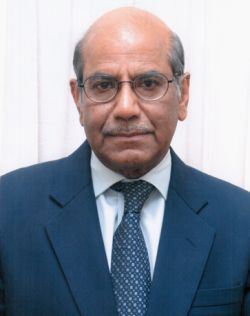Saturday, April 20, 2024
News and Views from the Global South
Opinion
OPINION: Indian Economy: Fading Promise or Gearing for Growth
Shyam Saran is a former Foreign Secretary of India. He is currently Chair of Research and Information Systems for Developing Countries (RIS) a prestigious think tank and a Senior Fellow at the Centre for Policy Research in New Delhi.
- It was in 2001 that the Chief Economist of Goldman Sachs, Jim O’Neill, coined the acronym, BRICs, to denote the special category of large emerging economies, which he predicted were destined to transform the structure of the global economy, through sustained growth in the twenty first century. According to him, the BRICs, namely, Brazil, Russia, India and China, which at the turn of the century accounted for 25% of global Gross domestic product (GDP), could double their share to 50%.
Will it be able to narrow the as yet expanding gap with China, which is a 11 trillion dollars economy to India’s 2 trillion dollars GDP?India enjoys sound economic fundamentals. It has a large and still growing young population, which with proper education and skills, could constitute a “demographic dividend” precisely when most advanced economies, as well as China, are confronting challenge of an ageing population. The country has followed a policy of fiscal prudence and conservative monetary policies which create a stable environment for investments and innovation.
The latest budget has pegged the fiscal deficit to 3.5% of the GDP. It has introduced several important reforms such as allowing foreign direct investment (FDI) into agro-processing and marketing which has the potential of transforming Indian agriculture. A bankruptcy law is in the offing and legislation has been passed on linking all subsidies and benefits to the ‘Aadhar’ , or the unique identification number which has by now enrolled over 900 million Indians (out of a total population of 1.2 billion). This will allow direct benefit transfer, through bank accounts, to those entitled to subsidies, such as on LPG, kerosene and essential food items. This is expected to reduce leakages and corruption significantly. However, the Government has so far been unable to pass legislation instituting the General Sales Tax (GST) which is indispensable to creating a true national market and reducing barriers to inter-State commerce and movement of goods.
India today has a pro-reform and pro-business government, led by Prime Minister Narendra Modi. A most important change from the past has been the public embrace by the political leadership of economic reforms, including unrolling a welcome mat for foreign investment, a commitment to improving the ease of doing business and providing incentives for the burgeoning start-up domain. The Prime Minister has been unequivocal in courting foreign direct investment, this being a major priority in his foreign visits. In this sense, India is no longer engaged in “reforms through stealth”. Reforms have entered the political mainstream and this provides assurance and predictability on the sustainability of the reform process.
Despite this congenial political environment for economic reforms, there has been mixed record of progress on the ground. This is, to some extent, the result of a much less favourable international economic environment since the global financial crisis erupted in 2007- 2008. The advanced economies of the U.S., Europe and Japan, are struggling to restore health to their severely impaired economies. The Chinese economy, which had emerged as the engine of global economic growth in the past 3 decades, is now slowing down more precipitously than expected.
Global trade, which was growing at double the rate of global GDP (6% against the GDP growth of 3% per annum) since 1990, is now expanding at a slower rate than global GDP (2.5% per annum). Since the 2007 – 2008 crisis, protectionist trends in major economies are on the rise, further shrinking market access for goods and services from emerging economies like India. Thus, the investment and export driven strategies which were successful in transforming East Asian economies, including China, are not as effective as before. India will need to find other drivers of growth, including within its domestic economy, to sustain accelerated growth. In this context, innovation becomes important. The surge in start-ups in India is an encouraging development. In having to deal with a more competitive and slower-growing global market-place, India will need to leverage is strengths. One key asset it has is the very size of its market and its significant growth prospects. For example, it has a mobile market of 900 million and the prospects for similar growth in its smart-phone market are immense. Its e-commerce sector is expanding at a rapid rate. It is in these new lines of business that opportunities for leap-frogging exist. However, the Modi government has not so far been able to formulate an overall economic strategy which takes into account the altered global economic environment and the implications for India’s economic prospects. Exports have been declining 15 months in a row and domestic investment is at a standstill. The banking sector, in particular, public sector banks, are heavily exposed to non-performing assets and foreign investors are confused by bureaucratic decisions which contradict the Prime Minister’s positive messaging. There appears to be a lack of capacity and leadership at the ministerial and senior bureaucratic level, leading to contradictory policies and lack of implementation. More recently the development narrative which won the elections for Modi has been in danger of being overwhelmed by the politics of polarization and communal and sectarian divide which appear to be driven by short term electoral calculations. This also acts as an inhibiting factor on foreign investment .
While India may have the best prospects today among emerging economies, it is likely to achieve only sub-optimal results unless some of these structural problems are resolved.
(End)

 Print
Print




